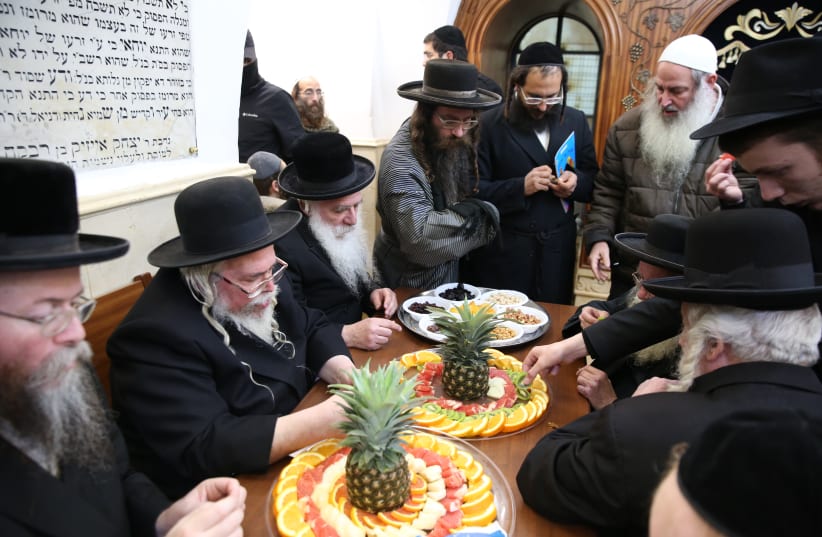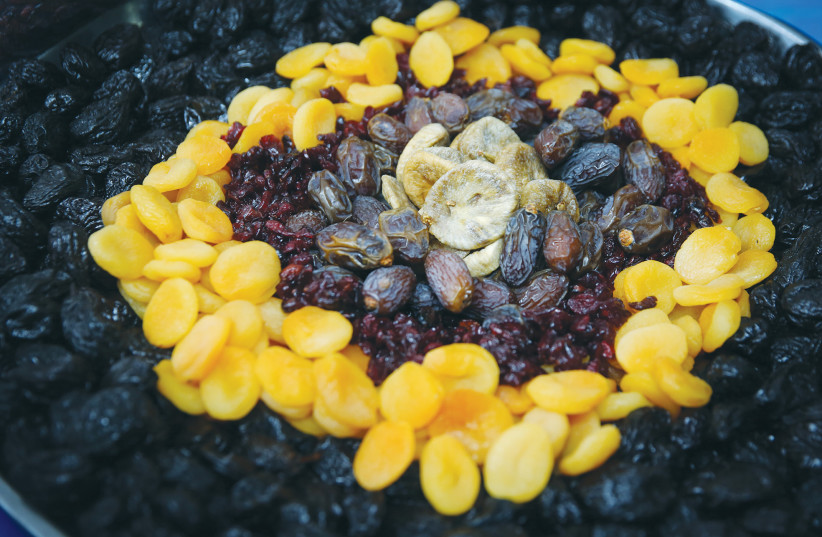Tu Bishvat, the 15th day of Shvat, begins Sunday night and marks the end of the rainy season in Israel.
Buds are beginning to appear on the trees and blossoming almond trees, the harbinger of spring, have begun to dot the landscape. On Tu Bishvat, we celebrate the yearly cycle of the growth of trees in the land of Israel.
According to Jewish mystic tradition, Tu Bishvat is the day when God renews sustenance and the life cycle of trees (when the sap starts to rise).
There are many customs that have arisen to remind us of the meaning of this day. We eat nuts and fruit, especially the fruits for which the Torah praises the land of Israel: grapes, figs, pomegranates, olives and dates.
Many pious Jews hold a Tu Bishvat Seder, not unlike the meal we have on Passover. This ancient tradition was upheld in Safed, the seat of kabbalistic studies in the 16th century. On this date, fruit trees were measured for growth in order to calculate the annual tithe to the Holy Temple. Long after the temples were destroyed, this Seder was a way to reaffirm the spiritual bond with the land of Israel in celebration of the approach of spring and the fruit of the earth.
There is a snowy white tablecloth, candles, copious amounts of fruits and nuts; prayers, readings and songs. There are also four cups of wine, accompanied by fruits divided into levels of ascending spirituality. The first cup is chilled white wine, symbolizing winter, accompanied by the lowest level of fruits that need a protective covering, such as oranges or almonds.
The second cup is white wine mixed with a small amount of red wine, signifying spring and the budding of new life. This is served with olives, apples, peaches and dates (the outer layer is eaten, yet the heart is protected and has within it the seed of new life).
The third cup is red wine mixed with a small amount of white wine. This is to symbolize summer and a perfect world in which nothing is wasted. Accompanying this is the highest level of fruits eaten, such as figs, grapes and berries.
The fourth cup is pure red wine to symbolize fertility and the bounty of autumnal crops waiting to be harvested.
What else happens on Tu Bishvat? Very little religiously, but a lovely ritual has arisen in Israel that has been adopted all over the Jewish world. It is a popular observance to plant trees, one of the greatest mitzvot you can do. Trees have great significance in Judaism.
It is written in Deuteronomy 20:19: “When you besiege a city for many days to wage war against it to seize it, don’t destroy its trees…” In the commentary Midrash Shmuel on the Mishna in Pirkei Avot 3:24, it is written that people are like trees in that their good deeds are their produce or “fruits”, and their arms and legs are the branches which bear these fruits. As well, people are upside down trees in that their heads are rooted in the heavens, nestled in the spiritual soils of the Eternal and nourished by their connection to their creator.
At the end of the Hasmonean dynasty, there lived a holy man named Choni, known as the circle drawer, and we read his story in the Talmud in Ta’anit 23a. One day Choni saw a man planting a carob tree and asked him: “How many years does it take for this [carob] tree to bear fruit?” The reply was “Seventy years.” Choni asked: “Do you think you will live another 70 years [to reap its fruit]?” The man responded: “I found [ready grown] carob trees in the world; as my forefathers planted these for me so I too plant these for my children.”
Although the world has never regarded Jews as being tied closely to nature, the truth is that no religion has closer ties to agriculture and ecology. The Midrash teaches us that people’s lives depend on trees and we are forbidden to live in a city that has no gardens or trees. They are so important to us that Rabbi Yochanan Ben-Zakai declared: “If you hold a sapling in your hand and are told: ‘Come look, the Messiah has arrived,’ plant the sapling first and only then go and greet the Messiah.”
Happy Tu Bishvat!
The writer is the author of 14 books. Her latest novel is Searching for Sarah.
dwaysman@gmail.com

